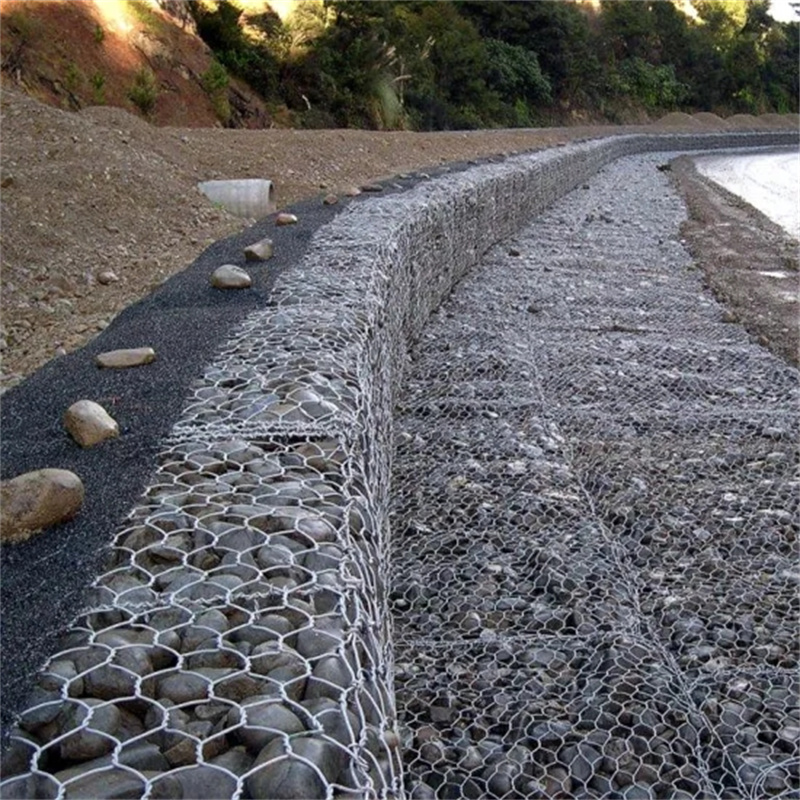Lap . 02, 2024 11:08 Back to list
gabion mesh
Exploring the Versatility of Gabion Mesh A Sustainable Solution for Modern Construction
In recent years, the construction industry has been steadily moving towards more sustainable and environmentally friendly practices. One such solution that has gained significant popularity is gabion mesh. Traditionally used for civil engineering projects, gabion mesh has expanded its applications to include landscaping, erosion control, and even artistic installations. This article delves into the various benefits and uses of gabion mesh, highlighting its versatility and sustainability.
Gabion mesh refers to a type of wire mesh container that is filled with stones, soil, or other materials. These containers, commonly referred to as gabions, provide significant structural support and are used to form retaining walls, embankments, and other earthworks. The wire mesh is typically made from galvanized steel or PVC-coated material, ensuring durability and resistance to corrosion. This inherent strength makes gabion mesh an excellent choice for both temporary and permanent structures.
One of the primary benefits of gabion mesh is its ability to blend seamlessly with natural landscapes
. When used in landscaping projects, gabions can serve a dual purpose providing structural stability while also enhancing the aesthetic appeal of an area. For example, garden walls made from gabion mesh act as beautiful features that can be filled with local stones or even plants, promoting biodiversity. Additionally, gabions can be utilized to create natural-looking terraces and seating areas in parks and recreational spaces.gabion mesh

Erosion control is another critical application of gabion mesh. The porous nature of gabions allows water to flow through while stabilizing soil and preventing erosion. This characteristic is particularly beneficial in areas prone to heavy rainfall or flooding, where traditional barriers may fail. By using gabions, construction projects can mitigate the risks associated with soil erosion and promote sustainable land use practices.
Beyond traditional construction and landscaping, gabion mesh has also found its place in art. Artists and architects alike are increasingly using gabions as a creative medium. Sculptures, installations, and even functional art pieces can be made using gabion mesh, serving as striking focal points in urban and rural settings. This trend not only promotes artistic expression but also reinforces the idea of using sustainable materials in creative endeavors.
Moreover, the sustainability of gabion mesh stems from its recyclability. When the filling material is sourced locally, the overall environmental impact is minimized, reducing transportation emissions. After the end of their lifecycle, the materials within the gabion can often be reused, further promoting a circular economy.
In conclusion, gabion mesh is a versatile and sustainable solution that is transforming how we approach construction, landscaping, and art. Its ability to provide structural support while blending harmoniously with the environment makes it a valuable resource in modern projects. As more industries embrace sustainable practices, gabion mesh is poised to play a crucial role in the development of resilient and aesthetically pleasing infrastructures. Whether in a garden, a park, or a bold artistic installation, gabion mesh showcases the potential of sustainable materials to enhance our built environment.
-
Visualizing Gabion 3D Integration in Urban Landscapes with Rendering
NewsJul.23,2025
-
The Design and Sustainability of Gabion Wire Mesh Panels
NewsJul.23,2025
-
The Acoustic Performance of Gabion Sound Barriers in Urban Environments
NewsJul.23,2025
-
Mastering the Installation of Galvanized Gabion Structures
NewsJul.23,2025
-
Gabion Boxes: Pioneering Sustainable Infrastructure Across the Globe
NewsJul.23,2025
-
Custom PVC Coated Gabion Boxes for Aesthetic Excellence
NewsJul.23,2025
-
Installation Tips for Gabion Wire Baskets in Erosion Control Projects
NewsJul.21,2025






